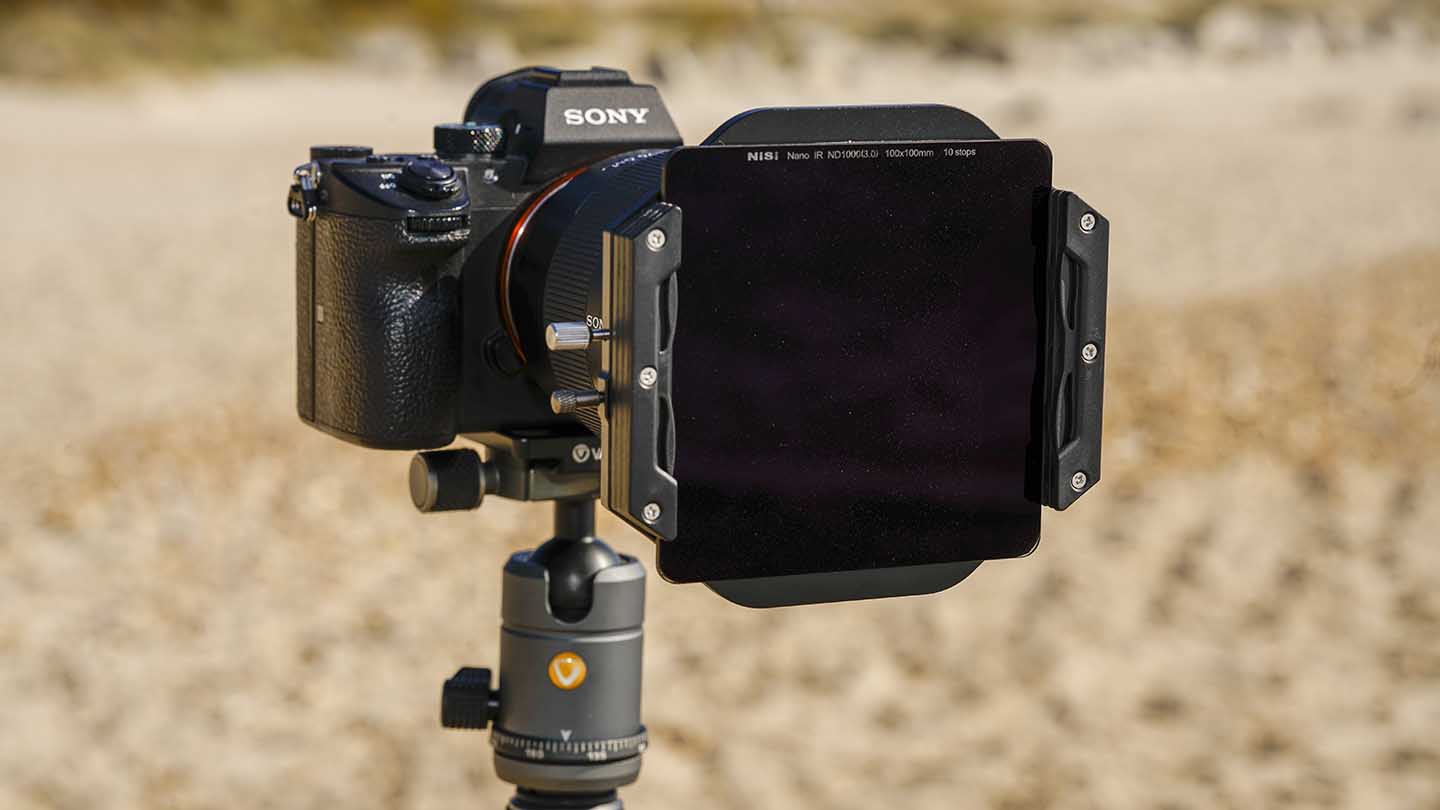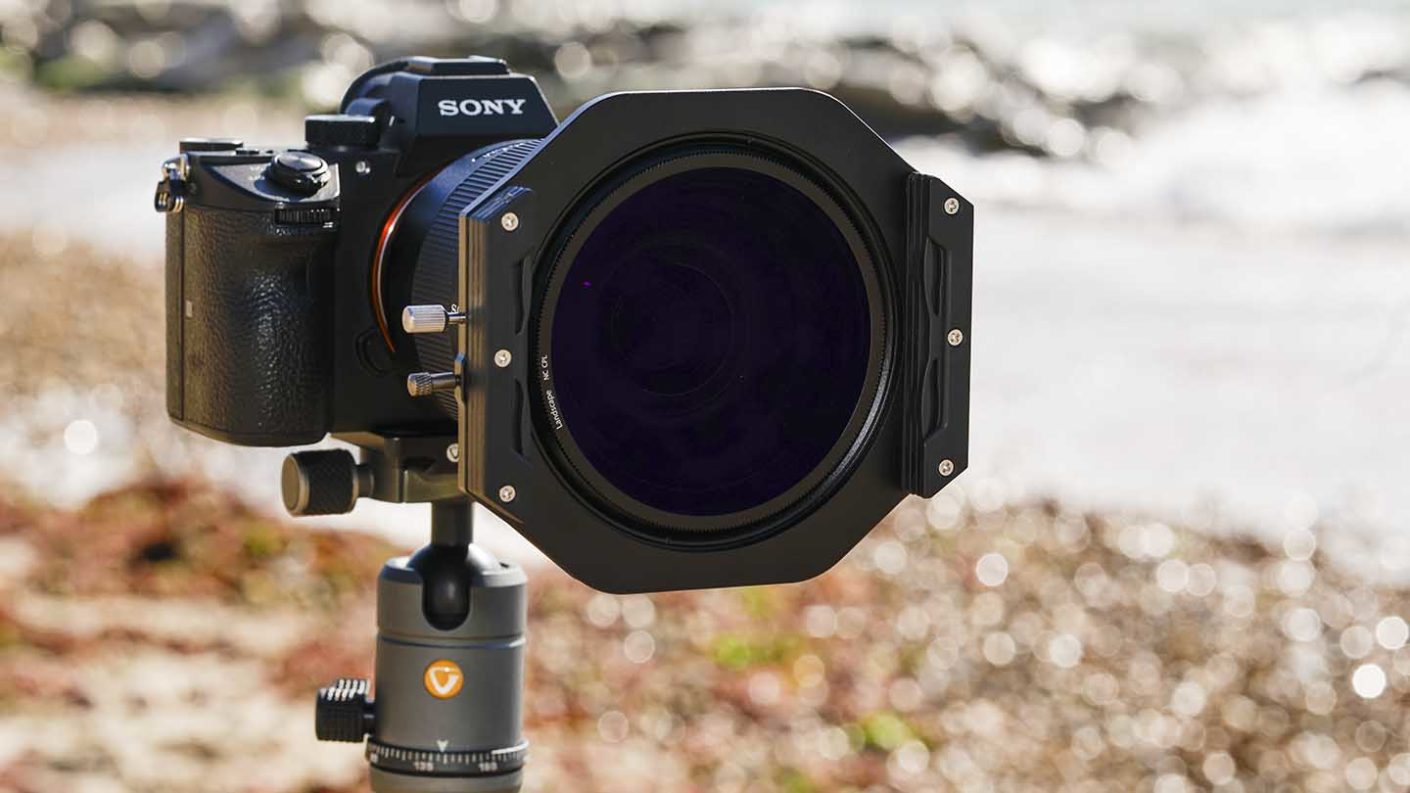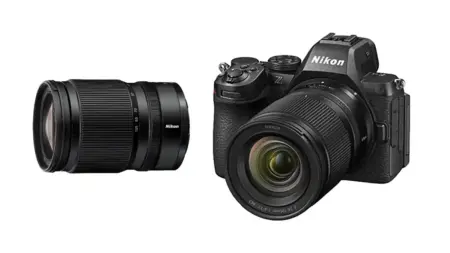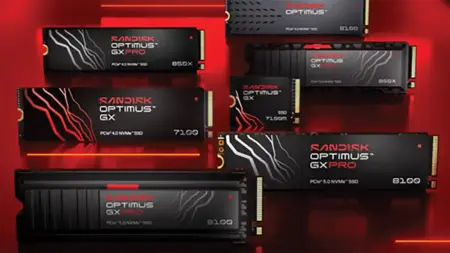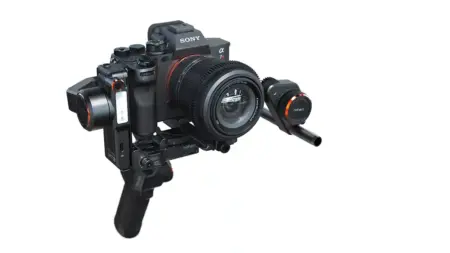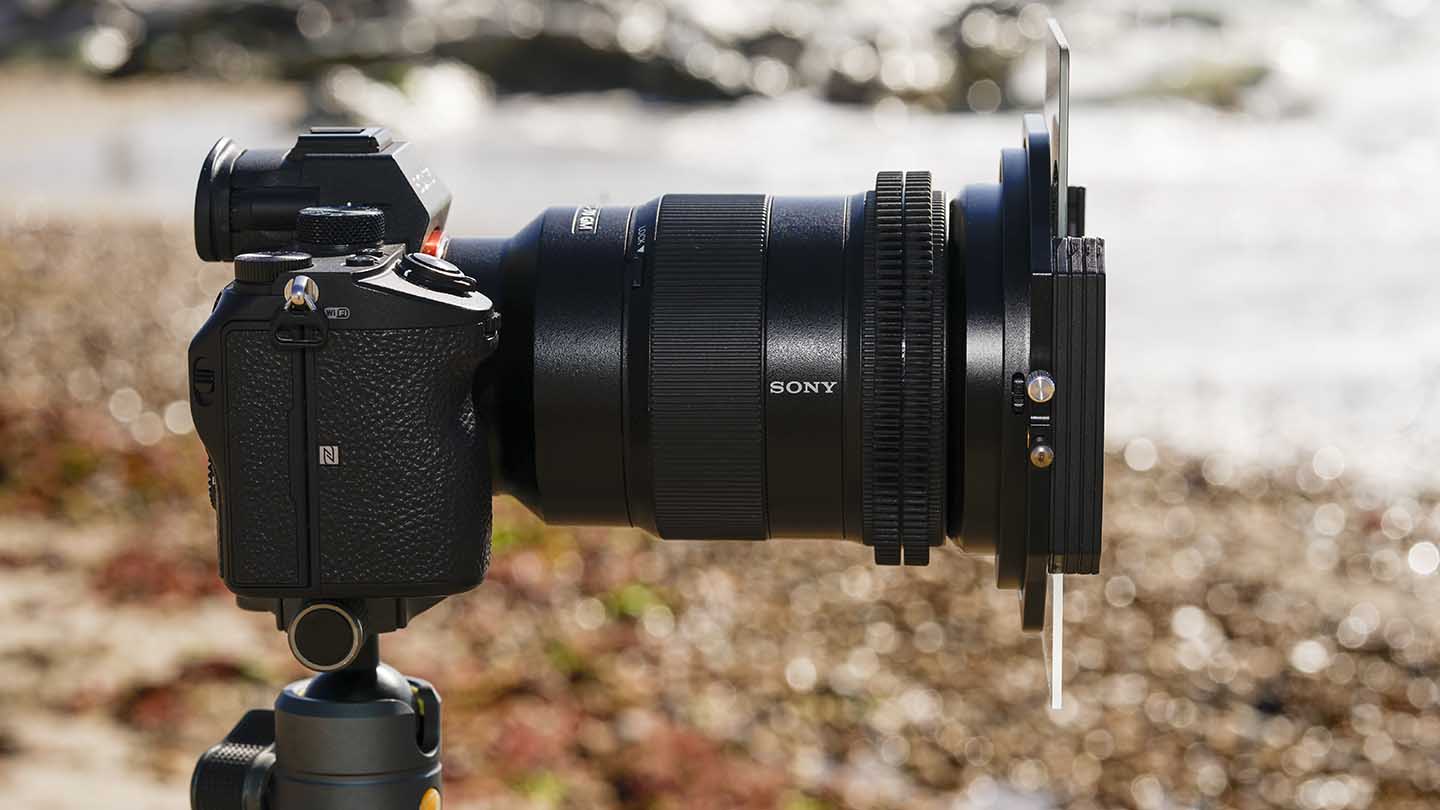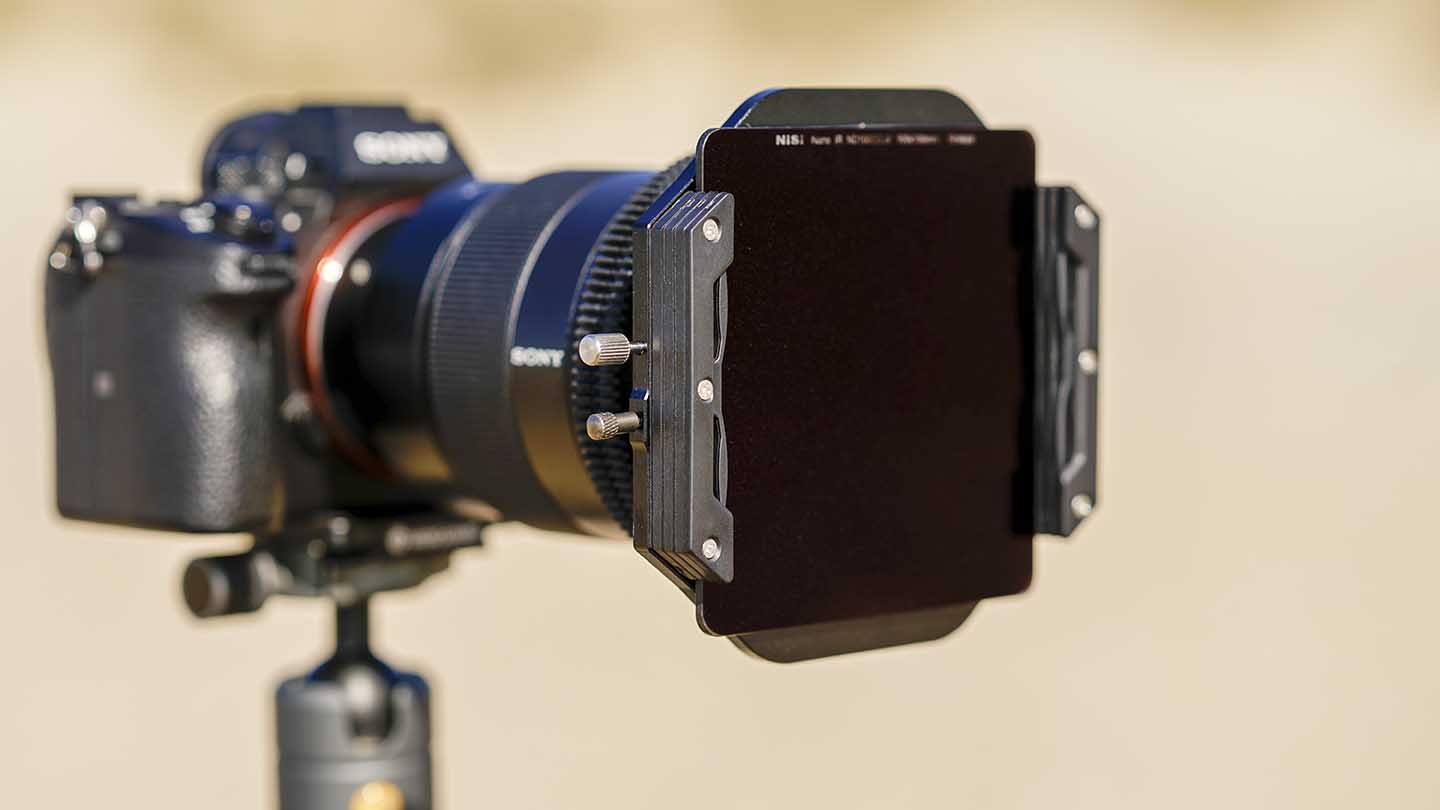The first stage with any filter system is to attach the filter to the front of the lens. In times past, this means screwing in an adapter and then clipping the holder in place.
I’m using a Sony 24-70mm f/2.8 with an 82mm diameter filter thread, so the adapter and holder attach directly. As with previous systems, the adapter ring can be unclipped from the holder for easier handling when attaching to the lens.
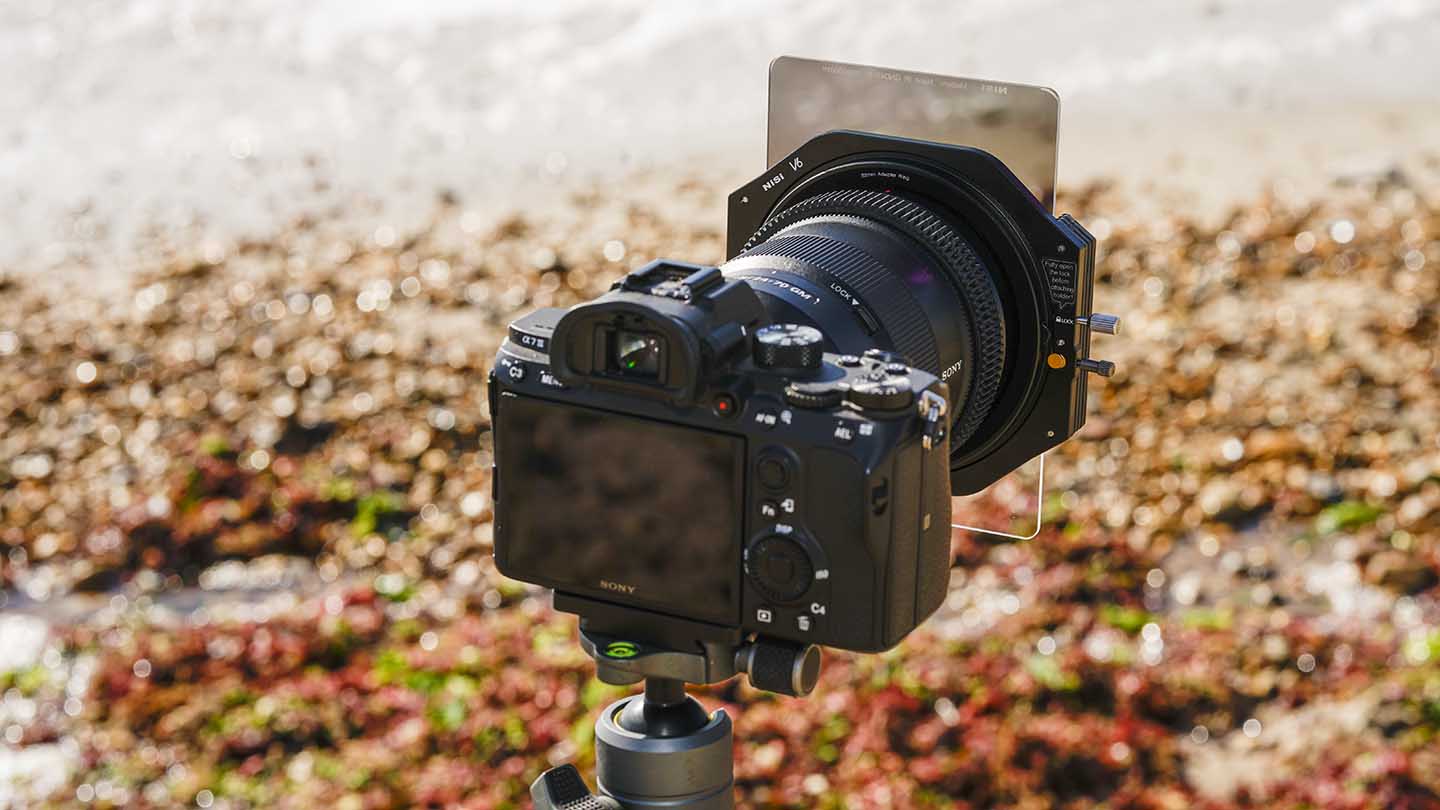
Pulling the upper knob on the holder releases the adapter and CPL, and it’s easily removed.
If you need to step down the adapter to 77, 72 or 67mm them one of the adapter rings can be screwed into place.
Likewise, if you want to remove the CPL then this can be removed at this point with ease.
Once you have the correct adapter in place it can then be screwed onto the lens. When tightened the holder can then be clipped back onto the adapter, rotated so that it is level and the second knob is then tightened locking the rotation of the holder.
This lock is a great feature and stops the holder from accidentally moving when you’re taking shots.
As both the lens and adapter ring are high quality, the fit is precise, and screws in easily to the front.
The effect of this CPL used in isolation is minimal, enough to give a slight boost to cloud and tree detail but not enough to be overbearing. For this reason, I found it easier and better around just to leave it in place.
Its addition makes perfect sense, and adding a grad or ND to the front boosts the overall effect.
The CPL can be adjusted with the small wheel on the side; this wheel is mirrored on both sides, so good for left and right-handed.
The overall feel of the holder is solid and well machined, and as there’s the option to stack three filters along with the CPL, there’s plenty of creative choices.
Out in the field, the filters are easy to use; they slip in and out of the holder with relative ease, yet still, retain enough resistance to stop them from dropping out. A result all filter users want to avoid.
The shape of the V6 holder’s three slots have been well designed, and the angled tops enable the easy insertion of the filters. Most holders, including the older V5 design from NiSi, feature a flatter insert, making the insertion and removing filters a little more tricky; however, here, that process is smooth and easy.
The plastic shims that help keep the filters in place are exceptionally well designed, and having used countless filter systems over the years; I can safely say this is one of the most solid and useable options out there.
I’m told that there were a few corrosion issues with the screws in the previous versions; this has now been rectified with new material used for all affected parts.
As filter holders, I’m impressed with the mechanical quality, ease of use and design.
Image quality
While this review is just looking at the filter holder and not the NiSi filters themselves, it’s worth just covering the three filters I’ve been using.
After the shoot and checking through the images on a calibrated monitor and I’m impressed with the IR ND64(1.8) and the IR GND4 (0.6). Firstly the clarity of the shots with the CPL and Grad loaded show no signs of aberration or vignette.
Popping on the ND64 and again the results are impressive with a slight but not overbearing cast that can be easily corrected. Again there’s little to no sign of chromatic aberration.
The results are exactly what you would expect from a top of range optics.
The NiSi filters have quickly become my go-to set for both ease of use and optical quality.
I’ll cover the filters individually in a further review.
